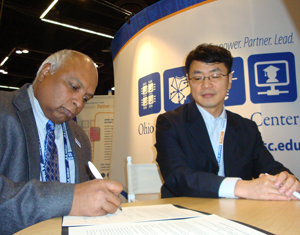SGI Donates Systems to Minority Institutions as Part of OSC's Cluster Ohio Project
Silicon Graphics, Inc. (SGI) announced that it will donate $140,000 dollars worth of supercomputing systems to Ohio's minority institutions to kick off OSC's (Ohio Supercomputer Center) Cluster Ohio Project.
SGI's outreach program will provide 20 supercomputing systems to Ohio's minority institutions -- Central State University (CSU) and Wilberforce University (WU) with technical support provided by the University of Dayton. OSC's Cluster Ohio Project, a program to distribute processors to faculty statewide, will be granting similar processors to faculty in June.
